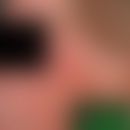Synonym(s)
DefinitionThis section has been translated automatically.
Chemical substances used in medicine that are capable of destroying microorganisms on living tissue. For this purpose, a wide variety of pathogens must be killed quickly and with sufficient certainty without damaging living tissue.
Antiseptics are distinguished from disinfectants in the narrower sense. Disinfectants are chemical substances that are suitable for destroying microorganisms on non-living (dead) objects.
Spectrum of actionThis section has been translated automatically.
Requirements for an antiseptic:
- the broadest possible spectrum of action with low inactivation by organic substances
- good tissue compatibility with the lowest possible sensitizing potential
- have the lowest possible systemic toxicity.
- good shelf life
- Lowest possible odour nuisance
- Antiseptics can have bactericidal, bacteriostatic, fungicidal and fungistatic effects. Furthermore, they should be characterised by a good shelf life and the lowest possible odour nuisance
- inexpensive
The effect of antiseptics is based on the physicochemical destruction of the cell wall or protein denaturation.
Advantage: Compared to antibiotics, disinfectants have the advantage that the onset of action is faster and the spectrum of action is broader.
Disadvantage: Antiseptics are not effective or only insufficiently effective in too low concentrations. In too high a concentration they are toxic and disturb the wound healing.
You might also be interested in
Recipe(s)This section has been translated automatically.
Antiseptics can be combined with topical glucocorticoids in clinically proven formulations. Combinations with glucocorticoids are unproblematic from a galenical point of view as the stability and effect optima harmonize considerably better than for example with local antibiotics.
The following combinations are suitable/not suitable:
Octenidine hydrochloride, chlorhexidine salts, polihexanide cannot be administered with anionic bases (e.g. Unguentum emulsificans aquosum DAB (=anionic hydrophilic cream DAB).
Octenidine hydrochloride precipitates in the presence of sorbic acid, benzoic acid and parabens. These are the classical preservatives of many dermatologically used cream applications. The base cream DAC which does not contain any of these preservatives has proven to be the best base for these antiseptics. If necessary, the base cream DAC can be diluted with up to 4 parts of water.
Triclosan is not compatible with the base cream DAC. For the formulation of Triclosan dermatics standardized regulations are available in DAC/NRF2. A hydrophilic base (NRF 11.135. = Hydrophilic Triclosan cream 1%.) and a lipophilic base (NRF 11.122. = Lipophilic Triclosan cream 1%). Both bases can be combined with topical glucocorticoids. A buffer addition for stabilization is not necessary as the pH value of both Triclosan creams is already in the weakly acidic range.
PreparationsThis section has been translated automatically.
Substances suitable for prophylactic or therapeutic use against wound infections. Also used for the preservation of therapeutics and cosmetics.
Alcohols
In the group of alcohols, ethanol (80%), hexanol, n-propanol (50-60%) and isopropanol (60%-70%) are used as antiseptics.
- Benzalkonium
- Benzethonium chloride
- Cetrimide
- Cetylpyridinium chloride
- Octenidine dihydrochloride
- polihexanide
Iodine-containing compounds:
Halogenated antiseptics
Quinoline derivatives
Phenol derivatives
Mercury-containing compounds
Note(s)This section has been translated automatically.
The term "antiseptic" was coined by John Pringle at the end of the 18th century. Pringle defined antiseptics as "all putrefactive agents". The first useful and widely used antiseptic was "carbolic acid, also called carbolic (syn. for phenol), which was introduced into medicine by Joseph Lister in 1865.
LiteratureThis section has been translated automatically.
- Staubach P (2017) Antiseptic active ingredients in topical preparations. Dermatologist 68: 835-849




